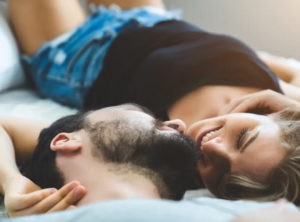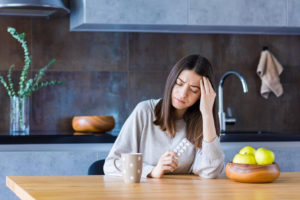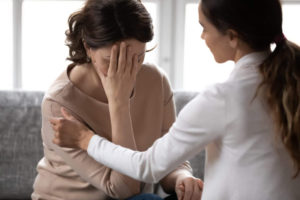Introduction to the overactive bladder:
Overactive bladder refers to urinary symptoms, but it is not a disease itself. The most significant and common symptom of the OAB is an uncontrolled and sudden need for urination. In some cases, patients may even leak urine when they feel the urge. Another main symptom of the OAB is passing the urine frequently during the night and daytime.
The leaking of urine is referred to as “incontinence.”
SUI (stress urinary incontinence) is the most common bladder problem. It differs from OAB; in the case of SUI, the patient is more likely to urinate or leak urine during physical activities, laughing, and sneezing.
According to the statistics and research studies, 30–40% of people suffer from the symptoms of overactive bladder in the United States. People living with OAB generally don’t seek treatment or help in order to avoid embarrassment.
This article will discuss a few points or guidelines for patients suffering from OAB in their normal daily life.
Tips for an overactive bladder at night:
- For uninterrupted sleep, avoid drinking fluids after 6 p.m. in order to keep your bladder empty while sleeping.
- Do not feel embarrassed to wear protective pads during the night to relax your mind, and don’t worry about OAB accidents while sleeping.
- Try to eliminate the frequent intake of caffeine from your diet.
- If you feel that your problem is due to medications like diuretics, try to take them during the daytime or in the morning instead of nighttime.
- Stay calm during your time in the bathroom. Do not complete your business in a hurry; rather, empty your bladder before going to bed.
- Rubberized bedsheets can help in giving a little reassurance during bedtime, so they can sometimes prevent OAB incidents or accidents.
- Before sexual activity or intimacy, try to empty your bladder and also link fewer liquids beforehand.
Living with an overactive bladder at work:
- At work, keep a strict record of your visits to the bathroom. Make a strict schedule or list of the timings to empty your bladder even if you don’t feel the urge. Careful scheduling of the your routine can help with controlling the intense symptoms of OAB.
- If you are worried about interrupted meetings, avoid liquids before the meetings. During the meeting, you can excuse yourself for a few minutes to go to the bathroom as well.
- Try to create a support network at work by sharing your problem and experience with co-workers. Try to educate your close friends about the problem and its symptoms
- Workplace ergonomics can also help. Try to sit comparatively closer to the bathroom or at least on the same floor as the toilet, so you don’t have to climb stairs to get to the toilet.
- Kegel exercise therapy can efficient in strengthening the pelvic muscles. Pelvic muscles play a significant role in controlling bladder muscles as well. So, if you can improve the strength of the pelvic floor and muscles, you will automatically improve your bladder control.
Guides to living with an overactive bladder when you are out or traveling:
- For most men who are worried about leaks during gym time, you can use a supportive fabric or the pad in your undergarments to avoid the situation and save embarrassment.
- While you are out having dinner, try to avoid liquid food and cocktails. Alcohol consumption can also aggravate the symptoms of OAB, so cut down on the alcohol intake while you are out
- If you are traveling by air, try to find seats near the restrooms. Moreover, with the latest technologies and innovations, you can carry a portable toilet with you if you want to avoid public toilets
- Suppose you are embarrassed about buying sanitary pads from the shopping mall. In that case, you can buy them online it can help you explore more choices and recent options available for your problem without people noticing.
- Even when you are out, do not forget your scheduled toilet timings. Always keep a record of restrooms in the restaurants and the shopping malls to avoid embarrassing accidents. Moreover, you do not need to feel too embarrassed about the problem because almost one out of 10 men in the US suffers from the OAB, so you aren’t the only one with this problem in public spaces.
Consider the treatment for OAB:
- Most of the time, patients don’t take the symptoms of OAB seriously, or they try to adapt to it as a part of normal life. However, in reality, this is not normal. You need to consult a urologist or physician to discuss your problem. If you are hesitant about face-to-face meetings, you can always have an appointment through telemedicine or an online consultation.
- As discussed earlier, exercise therapy and biofeedback can also help patients with OAB to find their weakened pelvic floor muscles and strengthen them.
- Diet plays a significant factor in the regular and complicated flow of urine and stools through the body. Try to include fiber-rich sources of food in your diet in order to avoid constipation, which can add pressure to the surrounding structures and aggravate the problem.
- Smoking and drug addiction can be another vital reason for bladder malfunction. To avoid these bladder complications, consider rehabilitation programs to stop alcohol addiction and smoking.
- Depression, anxiety, and psychological stressors can also play their role in worsening bladder control in OAB patients. Try to keep calm through meditation and relaxing practices in order to keep your overall body systems in control.
Takeaway:
Bladder control insufficiency isn’t a normal function of the body. You always need to seek medical help if you face any of these symptoms. However, for patients in the earlier phase of their disease, you can adopt a few tips or guidelines to restart living your life on normal terms.
References:
- Corcos J, Przydacz M, Campeau L, Witten J, Hickling D, Honeine C, Radomski SB, Stothers L, Wagg A. CUA guideline on adult overactive bladder. Canadian Urological Association Journal. 2017 May;11(5):E142.
- Irwin DE, Milsom I, Kopp Z, Abrams P, EPIC Study Group. Symptom bother and health care–seeking behavior among individuals with overactive bladder. European urology. 2008 May 1;53(5):1029-39.
- Burgio KL, Goode PS, Johnson TM, Hammontree L, Ouslander JG, Markland AD, Colli J, Vaughan CP, Redden DT. Behavioral versus drug treatment for overactive bladder in men: the Male Overactive Bladder Treatment in Veterans (MOTIVE) Trial. Journal of the American Geriatrics Society. 2011 Dec;59(12):2209-16.
- Przydacz M, Golabek T, Dudek P, Lipinski M, Chlosta P. Prevalence and bother of lower urinary tract symptoms and overactive bladder in Poland, an Eastern European Study. Scientific Reports. 2020 Nov 13;10(1):1-2.
- Sexton CC, Coyne KS, Thompson C, Bavendam T, Chen CI, Markland A. Prevalence and effect on health‐related quality of life of overactive bladder in older Americans: results from the epidemiology of lower urinary tract symptoms study. Journal of the American Geriatrics Society. 2011 Aug;59(8):1465-70.








